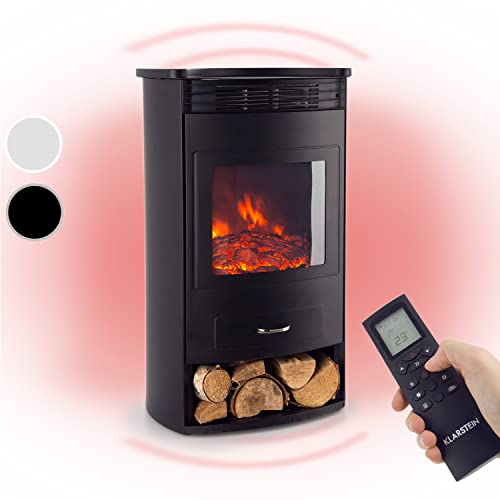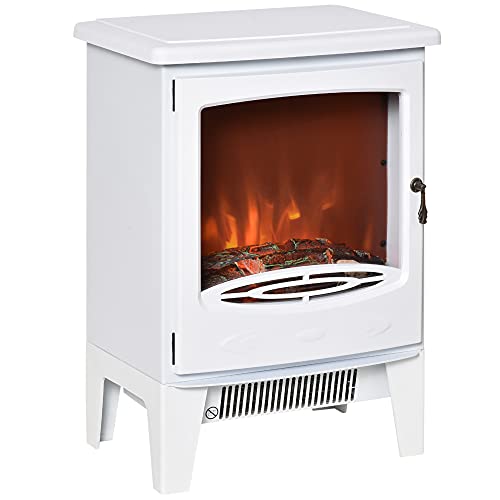Choosing an Electric Standing Patio Heater

A patio heater can make outdoor gatherings more enjoyable as the weather gets cooler. Choosing the right one depends on your space and budget. Consider whether you would prefer to use electricity or gas.

This stylish patio heater in cylinder shape offers enough heat for a small area. It comes with a security auto-shutoff, and straps to hold propane tanks. However, its tinier cord means that many users will require an extension cord with a longer length that's designed for outdoor use.
Easy to install
There are many different types of electric patio heaters, each with their own style and features. The best selection is contingent on the type and size of space you want to heat, and also your personal preferences. Certain models come with adjustable heating settings, while others have timers which shut the unit off automatically. A lot of models also have an option for a remote control, making it easy to operate. Also, you should look for a model that comes with crucial safety features, such as automatic shut-off and tip-over safety to ensure the safety of your guests.
One of the most straightforward choices is a propane heater, which doesn't require any installation or assembly. It is easily transported to the place you want to heat. The disadvantage is that it needs a 20lb propane tank, which can be costly. The propane heaters also release a lot heat in circles, which means they are not the best choice for large areas.
Another alternative is to use an electric heater that can be mounted on a wall or a
RealSmart 22" Freestanding Electric Fireplace Heater" - Cozy Warmth design. They are usually designed to fit with your existing decor and come in a variety of finishes. They're also energy efficient and quiet so they won't bother your guests. They are also odorless, and they require minimal maintenance. However, you should be aware that they're not as efficient as a gas-powered outdoor heater.
If you want to mount your heater onto the wall, select the most robust material. Plastic deforms when exposed high temperatures, while stone is the most durable choice. Make sure your wall is at a minimum of 14 inches away from any combustibles.
A hanging patio heater is another popular option. It offers a sleeker appearance than other models. These are perfect for small spaces or intimate seating areas. They also work well for patios that are enclosed by the roof or canopy. Be sure to verify the IP certification prior to purchasing a hanging heating device.
Heats up quickly
Patio heaters emit
Duraflame Red Infrared Quartz Fireplace Stove Sale heat unlike space heaters that blow hot air through a coil. This energy emits in the form of heat that quickly warms the objects and people in the area. These heaters can be gas- or electric powered and are generally made of propane or natural gas. Electric models are the best option for those on a tight budget. Gas-powered patio heaters are more costly to run, however they generate more heat than electric models and are able to be used in a broad variety of settings.
Before you pick a patio heater, consider the space you'd like to warm and how many people you plan on seating there. The general rule is to consider your outdoor space's square footage and multiply it by 20 to determine how much the heat output you require. For larger spaces, consider the possibility of a ceiling- or wall-mounted patio heater, which can provide more even coverage.
Another important factor to consider when selecting the right patio heater is its safety features. Stand-alone heaters should be placed on a level surface to prevent falling over, and should never be covered while switched on. They should be kept clear from children and combustibles. Additionally they should be kept clear from any electrical or power cords as they could be a fire hazard should they come into contact with them.
The best way to make sure that you're making the best choice for your outdoor heater is to study the instructions provided by the manufacturer attentively. Keep a working fire extinguisher close to you and keep it well maintained. Always employ patio heaters in an area that is well ventilated.
When the heater is not in use the best thing to do is bring your patio heater inside. You shouldn't leave them outdoors because they can cause water damage and pose the risk of fire. In addition, they may require periodic maintenance, and you might need to replace the wicks, or other parts.
Aesthetically pleasing
A patio heater will keep you warm during cool temperatures. Take into consideration the size of the area you'd like to heat and the conditions of the weather when deciding which patio heater is best for you. If you live in a region that has frigid temperatures, you might need to choose one with an extensive area of coverage or a high BTU. If your outdoor space has smaller dimensions or a smaller size, a model that has less power may be sufficient.
Some of the best outdoor heating products feature an elegant and modern style. The Lava Heat Capri Aline heater, for example, is six feet high and features a pyramid-shaped design that resembles the infrared lighting fixtures found in luxury hotels. It also has 360-degree infrared heating that can keep a large area warm. The unit is easy-to-install and comes with a rust-proof finish. It's the perfect choice for an apartment in the city.
Another alternative is a propane heater which can be purchased at an gas station or a convenience store. The heaters are powered by 20-pound liquid propane tanks which produce a continuous stream. They can also be refilled easily. Although they don't produce as much heat as electric heaters, propane heaters can be purchased and operated at a lower cost.
Electric patio heaters are a great alternative if you're looking for an affordable alternative. These heaters plug into regular outlets, making them easier to install than other types of patio heaters. Some models have an integrated thermostat that allows you to save energy by shutting off the heater at specific time intervals. However, electric heaters are typically less powerful than their propane counterparts, and require more energy to operate.
There are a variety of patio heaters that operate on natural gas or propane. These heaters require a permanent installation and will require to be connected to a gas line. The downside is that you will need to refill or replace the fuel regularly.
Whatever kind of patio heater you pick, make sure they are safe and properly maintained. Freestanding patio heaters, for instance, should be placed on a level surface and then weighed to stop them from falling over. They must also be kept away from fire-prone items and should not be placed in areas where children or pets might get too close.
Safety features
Patio heaters are designed to keep outdoor
Fireplaces & Stove areas warm, however the heat they release can also pose a risk when not used correctly. Patio heaters are equipped with security features like flame failure devices as well as tip-over switches. These features ensure that the heater will be safely shut off when it is knocked over or shattered by wind or any other cause. Certain patio heaters are able to be moved around, and others are permanently installed on decks or other outdoor areas. Some patio heaters come with an inbuilt propane tank while others can be connected to an existing gas supply.
There are many factors that affect the safety of patio heaters, in addition to the fuel type. For example propane is generally safer than natural gas since it doesn't produce any fumes. Propane heaters can also be weighted or anchored to prevent them from falling over and creating fire hazards.
However, if you choose to go with an electric model, it's important to follow the manufacturer's instructions for safe operation. Keep the unit clear of any flammable objects or materials and keep it in a safe location when it's being used. Use it only in an open space.
It's crucial to examine your heater's patio regularly for signs of wear and tear, irrespective of the model you pick. Check that the cord isn't damaged or frayed. Avoid touching it with your wet fingers. If you live in a location that is prone to strong winds it is advisable to consider anchoring or weighting your outdoor heater. This will reduce the chance of it shifting or tipping over, which could cause injuries to friends and family members.
When choosing a patio heater, it is essential to consider your budget and needs. The best way to protect an investment is to take care of it. Follow these guidelines to ensure that your patio heater lasts for a long time and offers years of enjoyment and comfort to you and your family.